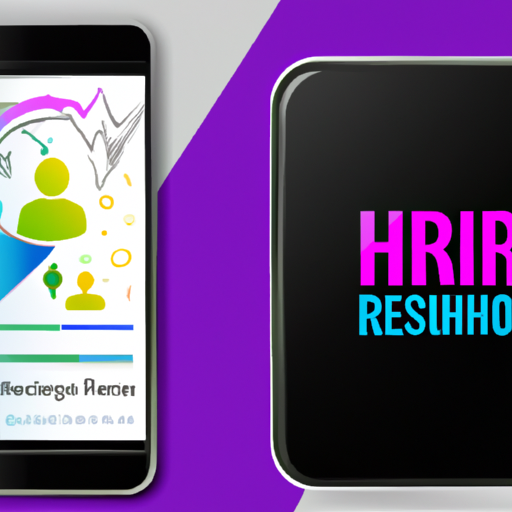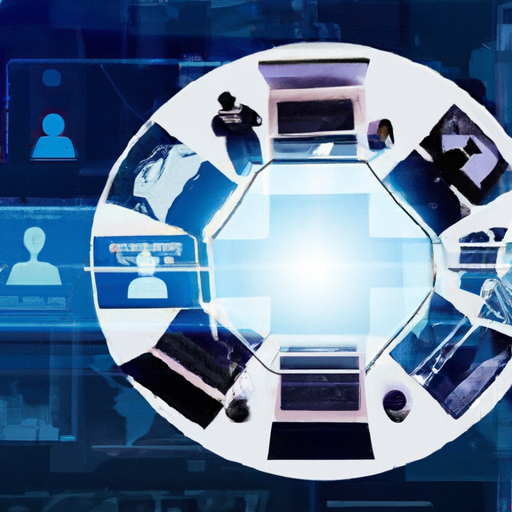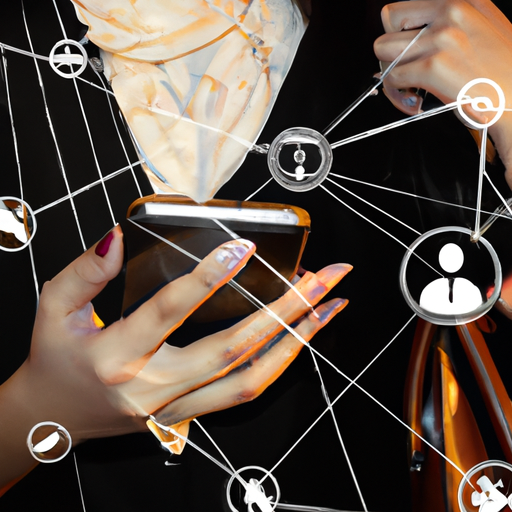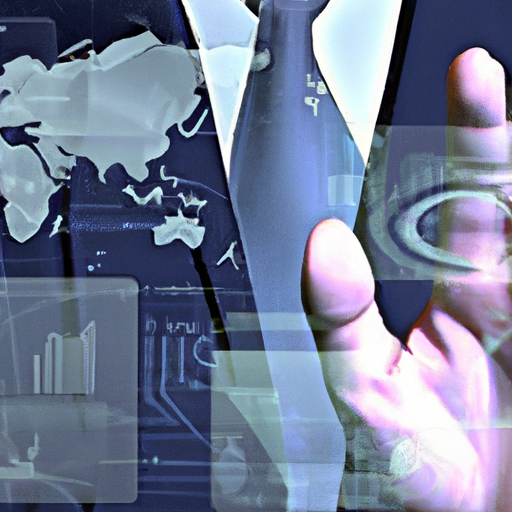Hr Technology Trends
In this article, you will explore the latest HR technology trends that are revolutionizing the workplace. From artificial intelligence to data analytics, these advancements are reshaping how Human Resources departments function and enhancing employee experiences. Get ready to discover the cutting-edge tools and strategies that can streamline HR processes, boost productivity, and ultimately drive business growth. Brace yourself for a fascinating journey into the world of HR technology.
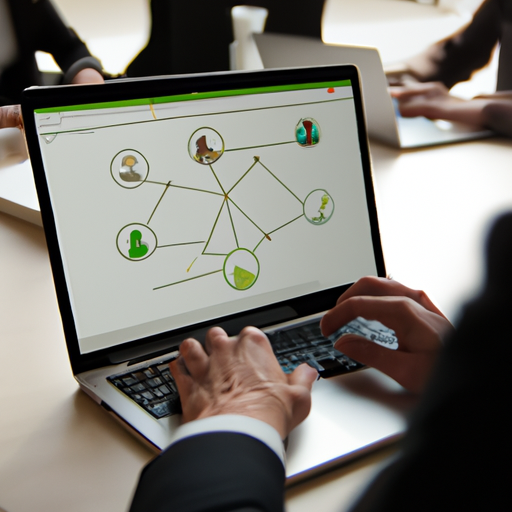
Table of Contents
Artificial Intelligence (AI) in HR
Artificial Intelligence (AI) has made significant advancements in recent years, revolutionizing various industries and transforming the way businesses operate. One area where AI has had a profound impact is in the field of Human Resources (HR). AI-powered solutions have emerged that streamline HR processes, enhance employee engagement, and improve talent management.
AI-powered recruitment
Recruitment is a critical function in HR, and AI has made it more efficient and effective than ever before. AI algorithms can quickly sift through thousands of resumes, identifying the most qualified candidates based on specific criteria. This not only saves time but also ensures that HR professionals focus on the candidates who have the potential to be the best fit for the organization.
AI-powered recruitment tools can also help eliminate unconscious bias in the hiring process. By removing human subjectivity and relying on data-driven analysis, AI solutions promote fairness and equal opportunities for all candidates. This not only reduces the risk of discrimination but also ensures a more diverse and inclusive workforce.
AI-driven employee engagement
Employee engagement is crucial for organizational success and productivity. AI-powered solutions can help HR departments better understand and engage their employees. By analyzing vast amounts of data, including employee feedback, performance metrics, and sentiment analysis, AI can provide insights into employee satisfaction and engagement levels.
Through natural language processing and machine learning, AI can analyze employee feedback from surveys, emails, and social media in real-time. This enables HR professionals to quickly identify patterns and trends, allowing them to address potential issues before they escalate. AI can also provide personalized recommendations and interventions to improve employee engagement, contributing to a more motivated and satisfied workforce.
AI-enabled talent management
Talent management involves identifying, nurturing, and retaining the top performers within an organization. AI can play a significant role in talent management by providing valuable insights into employee performance, potential, and career development opportunities.
AI algorithms can analyze employee performance data, identify patterns, and predict future success. This can help HR professionals make informed decisions regarding promotions, development plans, and succession planning. AI can also help identify skill gaps within the organization and recommend targeted training programs to upskill employees.
By leveraging AI-enabled talent management solutions, HR departments can make data-driven decisions, ensuring that the right talent is in the right place at the right time. This not only enhances organizational performance but also improves employee satisfaction and reduces turnover.
Cloud-Based HR Systems
Cloud-based HR systems have gained popularity in recent years due to their numerous advantages over traditional on-premises systems. These systems leverage cloud technology to provide organizations with flexible, scalable, and cost-effective HR solutions.
Advantages of cloud-based HR systems
Cloud-based HR systems offer several advantages over on-premises solutions. One of the most significant advantages is the flexibility they provide. With cloud-based systems, HR professionals and employees can access the system anytime and from anywhere with an internet connection. This eliminates the need for physical access to on-premises servers, allowing for remote work and increasing productivity.
Another advantage is scalability. Cloud-based HR systems can easily accommodate organizational growth and changing needs. Whether an organization expands or downsizes, cloud-based systems can quickly adapt to the changing requirements without the need for significant infrastructure investments. This scalability ensures that HR processes can keep pace with the organization’s evolving demands.
Increased security and data integrity
With data breaches becoming increasingly common, data security is a top concern for organizations. Cloud-based HR systems provide enhanced security measures compared to traditional on-premises systems. Cloud service providers invest heavily in robust security protocols, ensuring that sensitive employee data is protected against unauthorized access and cyber threats.
Cloud-based systems also offer automatic backup and disaster recovery capabilities. Data is regularly backed up and stored in multiple geographical locations, reducing the risk of data loss. In the event of a disaster or system failure, organizations can quickly recover their HR data without significant disruptions to their operations.
Cost-effectiveness and scalability
Implementing and maintaining on-premises HR systems can be costly, requiring organizations to invest in hardware, software licenses, and dedicated IT resources. In contrast, cloud-based HR systems eliminate the need for upfront infrastructure investments. Organizations pay a subscription fee based on their usage, making it a more cost-effective option, especially for smaller businesses with limited budgets.
Cloud-based systems also reduce the IT burden on organizations. Updates, maintenance, and system enhancements are handled by the cloud service provider, freeing up HR and IT teams to focus on strategic initiatives rather than routine system maintenance. This scalability and reduced IT overhead allow organizations to allocate resources more efficiently and invest in areas that drive growth and innovation.

Mobile HR Applications
In today’s digital age, mobile technology has become an integral part of our lives. Mobile HR applications leverage this technology to provide enhanced accessibility, flexibility, and self-service functionality for both employees and HR professionals.
Increased accessibility and flexibility
Mobile HR applications allow employees to access HR services and information anytime and from anywhere using their smartphones or tablets. This increased accessibility enables remote and global workforces to stay connected and engaged, regardless of their physical location. Employees can view their pay stubs, update personal information, request time off, and access HR policies and procedures on the go, making their lives easier and more convenient.
HR professionals also benefit from mobile HR applications by being able to manage HR tasks from anywhere. They can approve leave requests, access employee data, and communicate with employees via the app. This flexibility allows HR professionals to optimize their time and be more responsive to employee needs, resulting in improved HR service delivery.
Self-service functionality for employees
Mobile HR applications empower employees to take control of their HR-related tasks through self-service functionality. Employees can update their personal information, view their benefits, enroll in training programs, and request time off without the need for HR intervention. This self-service functionality not only saves time for both employees and HR professionals but also improves data accuracy by eliminating manual data entry.
Self-service functionality also promotes employee autonomy and engagement. By giving employees the ability to access and manage their HR information independently, organizations foster a culture of empowerment and ownership. Employees feel more in control of their HR-related needs, resulting in higher satisfaction levels and reduced administrative burden on HR.
Real-time collaboration and communication
Mobile HR applications facilitate real-time collaboration and communication between employees and HR professionals. Chat features and notifications allow HR professionals to respond quickly to employee inquiries and provide timely support. This real-time communication ensures that HR-related issues are resolved promptly, minimizing disruptions and improving employee experiences.
Additionally, mobile HR applications can foster collaboration among employees. Features such as discussion boards and social media-like interfaces enable employees to connect, share knowledge, and collaborate on projects. This virtual collaboration promotes teamwork and enhances employee engagement, irrespective of physical distances.
Analytics and Big Data
The advent of big data has opened new possibilities for HR professionals to harness data-driven insights and make informed decisions. Analytics and big data applications in HR enable organizations to understand workforce dynamics, identify trends, and predict future outcomes.
Predictive analytics in HR
Predictive analytics combines historical data and statistical algorithms to forecast future trends and outcomes. In HR, predictive analytics helps identify patterns in recruitment, talent management, and employee engagement. By analyzing data from various systems, including HR software, performance metrics, and employee surveys, organizations can gain insights into factors that drive success and predict future performance.
For example, predictive analytics can help identify the key attributes of successful hires. By analyzing data from past successful candidates, organizations can develop profiles of ideal candidates and use these profiles to assess future applicants. This leads to more accurate candidate evaluation and increased hiring success rates.
Data-driven decision-making
Data-driven decision-making has become a core principle in HR. By leveraging analytics and big data, HR professionals can move beyond intuition and gut feelings to make decisions backed by empirical evidence.
HR analytics can help identify factors that contribute to employee turnover. By analyzing data such as employee demographics, tenure, performance, and satisfaction scores, organizations can identify attrition risks and take proactive steps to address them. This not only improves employee retention but also saves costs associated with recruitment and onboarding.
Identifying and addressing employee retention risks
Employee retention is a significant concern for organizations, as high turnover rates can be disruptive and costly. Analytics and big data can play a crucial role in identifying and addressing employee retention risks. By analyzing data on factors such as employee satisfaction, performance, compensation, and career opportunities, organizations can identify employees at risk of leaving and take targeted actions to retain them.
For example, analytics can reveal that employees with a certain tenure or in a specific department have higher attrition rates. Armed with this information, organizations can implement interventions such as mentorship programs, career development plans, or compensation adjustments to address retention risks proactively.
By leveraging analytics and big data, HR professionals can gain valuable insights into their workforce, enabling them to make evidence-based decisions and drive positive organizational outcomes.
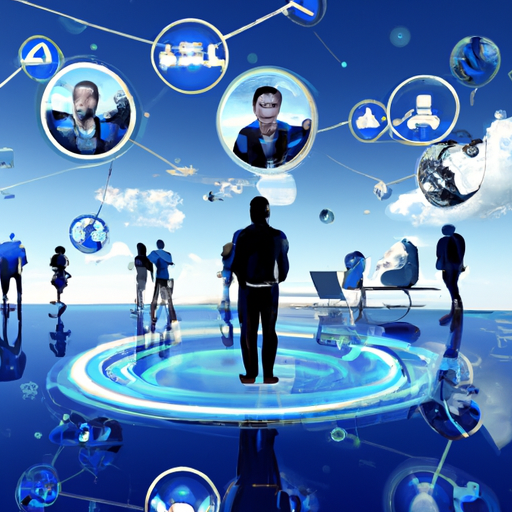
Employee Self-Service Portals
Employee self-service portals have become increasingly popular in modern HR systems. These portals provide employees with a centralized platform to access HR information and perform various HR-related tasks independently.
Streamlined HR processes
Employee self-service portals streamline HR processes and reduce the administrative burden on HR professionals. Employees can access and update their personal information, such as contact details and tax forms, without the need for HR intervention. This eliminates delays and errors associated with manual data entry, ensuring that HR records are accurate and up-to-date.
Additionally, self-service portals automate routine HR tasks such as submitting leave requests, accessing pay stubs, and updating benefits information. This frees up HR professionals to focus on strategic initiatives rather than spending time on repetitive administrative tasks. Streamlining HR processes through self-service portals improves efficiency and productivity within HR departments.
Enhanced employee satisfaction
Employee self-service portals empower employees by giving them control over their HR-related information and tasks. Employees can independently access and update their personal information, view their benefits, and manage their time off requests. This self-service functionality enhances employee satisfaction by providing a convenient and user-friendly interface to interact with HR.
Self-service portals also offer transparency and visibility into HR processes. Employees can track the status of their requests and view important HR policies and announcements. This transparency fosters trust and engagement by ensuring that employees are well-informed about their HR-related matters.
Reduced administrative burden
By enabling employees to manage their HR-related tasks independently, self-service portals significantly reduce the administrative burden on HR professionals. With employees taking charge of routine tasks such as time off requests and information updates, HR departments can focus on strategic initiatives and value-adding activities.
Self-service portals also decrease the likelihood of errors and delays associated with manual processing. Employees enter their data directly into the system, reducing the need for HR professionals to manually input information. This not only improves data accuracy but also saves time and reduces the risk of data entry mistakes.
Overall, employee self-service portals improve HR efficiency, enhance employee satisfaction, and reduce administrative burdens, making them a valuable addition to modern HR systems.
Virtual and Augmented Reality in HR
Virtual and Augmented Reality (VR/AR) technologies are no longer limited to the gaming industry. These immersive technologies are finding applications in various fields, including HR, offering unique and engaging experiences for training, recruitment, and collaboration.
Immersive training and onboarding experiences
Virtual and augmented reality technologies provide immersive training experiences that go beyond traditional classroom-based or e-learning approaches. These technologies recreate realistic scenarios and environments, allowing employees to practice and enhance their skills in a safe and controlled setting.
For example, VR can simulate hazardous work environments or complex operational procedures, enabling employees to gain hands-on experience without exposing them to real risks. This immersive training can significantly improve learning outcomes and enable employees to perform their tasks more effectively, resulting in reduced errors and increased productivity.
AR can also enhance onboarding experiences by overlaying digital information on the physical world. New employees can use AR-enabled devices to access real-time guidance and instructions, making their transition into the organization smoother and more efficient.
Virtual job fairs and interviews
Virtual reality has disrupted the traditional job fair and interview processes. Instead of attending physical events, candidates and employers can participate in virtual job fairs from anywhere in the world. VR platforms allow candidates to explore virtual booths and interact with recruiters in real-time. This not only saves time and costs associated with travel but also increases the pool of candidates and job opportunities available.
Virtual reality is also transforming the interview process. VR interviews provide a more immersive and comprehensive evaluation of candidates’ skills and abilities. Employers can create virtual environments that simulate real work scenarios, allowing candidates to showcase their problem-solving skills and demonstrate how they would handle job-specific challenges. This assessment provides a more accurate reflection of candidates’ capabilities, leading to better hiring decisions.
Enhanced employee collaboration
Virtual and augmented reality technologies enable employees to collaborate and communicate seamlessly, irrespective of physical locations. VR environments simulate face-to-face interactions, creating a sense of presence and engagement. Teams can meet virtually, share documents, and collaborate on projects as if they were in the same room, bridging distances and time zones.
AR can also enhance collaboration within physical workplaces. By overlaying digital information onto real-world objects, employees can access shared documents, instructions, and annotations, improving communication and reducing errors. For example, employees in complex manufacturing processes can use AR-enabled devices to access real-time information and instructions, ensuring that they perform their tasks accurately and efficiently.
Virtual and augmented reality technologies redefine how employees interact and collaborate, opening new possibilities for training, recruitment, and teamwork.
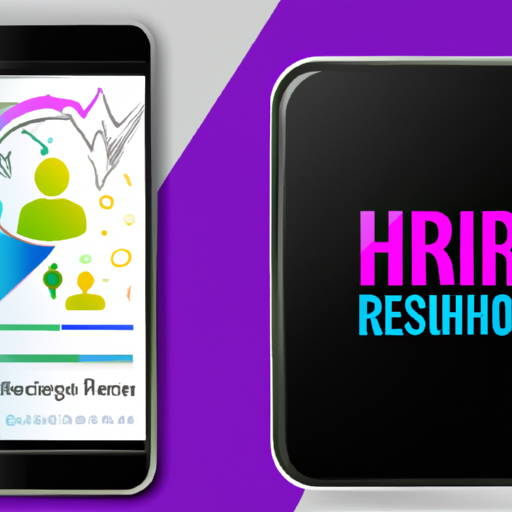
Employee Wellness and Wellbeing
Employee wellness and wellbeing are vital for maintaining a healthy, engaged, and productive workforce. HR departments are increasingly turning to technology to promote employee wellness through mental health support, wellness apps, and work-life balance tools.
Mental health support and resources
Mental health issues affect a significant portion of the workforce, and organizations are recognizing the importance of addressing these concerns. HR departments are leveraging technology to provide mental health support and resources to employees.
Virtual mental health programs and apps offer access to licensed therapists, counselors, and resources from the convenience of a smartphone or computer. These platforms provide employees with a safe and confidential space to seek professional help, access self-help resources, and track progress. By making mental health support easily accessible, organizations can reduce stigma, promote early intervention, and support employee wellbeing.
Wellness apps and wearables
The rise of mobile applications and wearable devices has opened new opportunities for employee wellness. Wellness apps can provide personalized recommendations for exercise, nutrition, and stress management, empowering employees to take control of their wellbeing. These apps often integrate with wearable devices, such as fitness trackers, to gather data on activity levels, sleep patterns, and heart rate. Employees can monitor their progress, set goals, and track their performance using these devices, promoting a healthy and active lifestyle.
Employers can also leverage the data collected from wellness apps and wearables to identify trends and implement targeted wellness initiatives. For example, if data shows that a significant number of employees have high stress levels, organizations can offer stress management programs or counseling services to address this issue proactively.
Work-life balance tools and initiatives
Maintaining a healthy work-life balance is crucial for employee wellbeing and satisfaction. HR departments are using technology to introduce work-life balance tools and initiatives that help employees manage their time effectively and reduce stress.
Remote work tools and flexible scheduling applications enable employees to work from home or adjust their working hours to accommodate personal obligations. These tools facilitate work-life balance by ensuring that employees have the flexibility they need to prioritize their personal lives while fulfilling work responsibilities.
Additionally, HR departments can implement initiatives such as wellness challenges, meditation sessions, and mindfulness programs to promote work-life balance and stress reduction. Technology platforms can facilitate the delivery and tracking of these initiatives, ensuring that employees have access to these resources and can actively participate in promoting their wellbeing.
By leveraging technology, HR professionals can support employee wellness and wellbeing, leading to a healthier, happier, and more engaged workforce.
Blockchain in HR
Blockchain technology, initially associated with cryptocurrencies, has expanded its applications and is gaining traction in various industries, including HR. Blockchain in HR offers benefits such as streamlined verification processes, prevention of resume fraud, and enhanced transparency in payroll and benefits administration.
Streamlined and secure verification processes
Verifying employee credentials, such as education qualifications and professional certifications, can be a time-consuming and error-prone process. Blockchain technology offers a decentralized and immutable ledger that allows organizations to securely store and verify employee records.
By leveraging blockchain, HR departments can automate the verification process, eliminating the need for manual checks and third-party verifiers. Employees’ credentials can be stored on the blockchain, and employers can easily verify the authenticity and validity of these records. This streamlines the hiring process, reduces administrative delays, and ensures data accuracy.
Preventing resume fraud
Resume fraud is a significant concern for employers, with candidates providing inaccurate or misleading information on their resumes. Blockchain technology can help prevent resume fraud by securely storing and verifying employee credentials.
By storing education degrees, professional certifications, and employment history on a blockchain, HR departments can verify the authenticity of candidates’ claims. Blockchain ensures that this information is tamper-proof and cannot be manipulated. Potential employers can easily access and validate candidates’ credentials, reducing the risk of hiring unqualified or dishonest candidates.
Enhanced transparency in payroll and benefits administration
Blockchain technology can enhance transparency and trust in payroll and benefits administration. Blockchain-based platforms enable the secure storage and transfer of data related to employee compensation, benefits, and deductions.
By leveraging blockchain, organizations can ensure that payroll data is accurate, immutable, and easily auditable. Employees can have full visibility into their compensation and benefits, eliminating doubts and disputes. Payroll processes can also be automated using smart contracts, ensuring that employees are paid accurately and on time.
Blockchain-based platforms can also enhance data privacy by allowing employees to control and share their personal data securely. Employees can give explicit consent for their data to be accessed by specific parties, ensuring that their privacy rights are protected.
Blockchain technology offers a secure and transparent framework for HR processes, providing benefits such as streamlined verification, prevention of resume fraud, and enhanced data privacy and integrity.
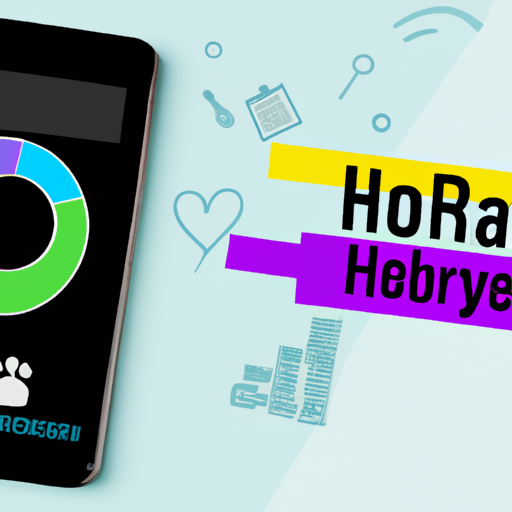
Gamification of HR Processes
Gamification, the application of game elements and mechanics in non-game contexts, has gained popularity in HR. Gamification of HR processes offers engaging and interactive learning experiences, motivating and rewarding employee performance, and increasing employee participation and satisfaction.
Engaging and interactive learning experiences
The traditional approach to training and learning often lacks engagement and motivation. Gamification addresses this challenge by incorporating game elements, such as challenges, badges, and leaderboards, into training programs.
Gamified training modules provide interactive and immersive learning experiences that captivate employees’ attention. By transforming training into a game-like experience, employees are motivated to actively participate and progress through the content. These gamified modules often include simulations, quizzes, and branching scenarios, allowing employees to apply their knowledge and receive instant feedback.
Gamification of training not only enhances knowledge retention and engagement but also makes learning enjoyable and memorable. Employees are more likely to apply what they have learned when they are actively involved and motivated by game mechanics.
Motivating and rewarding employee performance
Gamification can drive employee motivation and reward high performance. By introducing game elements, such as points, levels, and achievements, organizations can create a sense of competition and accomplishment that motivates employees to excel.
Gamified performance management systems can track and reward employees for achieving specific goals and milestones. For example, sales teams can compete for the highest sales figures, earning points and badges for their achievements. This recognition incentivizes employees to go above and beyond, resulting in improved performance and productivity.
Gamified recognition programs can also encourage peer-to-peer recognition. Employees can award points and badges to their colleagues for exceptional contributions, fostering a positive and collaborative work culture.
Increased employee participation and satisfaction
Gamification promotes increased employee participation and satisfaction in various HR processes, such as performance management, training, and wellness initiatives. By making these processes more engaging and enjoyable, organizations can increase employee buy-in and participation rates.
For example, gamification can be leveraged in wellness programs, where employees earn points and rewards for meeting wellness goals or participating in healthy activities. This motivates employees to take an active role in their health and fosters a culture of wellness within the organization.
Gamification can also enhance employee engagement in performance reviews and goal setting processes. By transforming these processes into a collaborative and interactive experience, employees feel more invested in their performance and development. This leads to more meaningful conversations and increased employee satisfaction with the performance management process.
Overall, gamification of HR processes helps organizations create a more engaging and motivating work environment, resulting in increased employee participation, satisfaction, and performance.
Robotics Process Automation (RPA) in HR
Robotics Process Automation (RPA) involves the use of software robots or “bots” to automate repetitive, rule-based tasks. In HR, RPA can automate administrative and data-intensive processes, resulting in efficiency gains, cost savings, and improved accuracy.
Automating repetitive and time-consuming tasks
HR departments often spend a significant amount of time on repetitive and administrative tasks, such as data entry, payroll processing, and benefits enrollment. RPA can automate these tasks, freeing up HR professionals to focus on strategic initiatives and value-adding activities.
Software robots can be programmed to complete tasks in HR systems and applications, mimicking human interaction. For example, they can update employee records, extract data from resumes, process employee onboarding paperwork, or generate reports. By automating these tasks, RPA reduces the likelihood of errors and data entry mistakes, ensuring accuracy and operational efficiency.
Efficiency gains and cost savings
Automation through RPA offers efficiency gains and cost savings for HR departments. Software robots can perform tasks at a much faster pace compared to human counterparts, resulting in reduced processing times and increased productivity.
By automating manual and administrative tasks, HR professionals can redirect their time and efforts to more strategic initiatives. This can lead to improved HR service delivery, enhanced employee experiences, and increased organizational effectiveness.
RPA also offers cost savings by reducing the need for additional staff or outsourcing. Software robots can handle high-volume and repetitive tasks without incurring additional labor costs. This cost-effectiveness allows HR departments to allocate resources to areas that drive organizational growth and innovation.
Improved accuracy and data quality
Data accuracy and quality are critical for HR processes, such as payroll, benefits administration, and compliance reporting. RPA reduces the risk of human error and ensures consistent data input and processing.
Software robots follow predefined rules and eliminate the variability associated with manual processes. They can validate data for accuracy, perform data cleansing activities, and ensure compliance with regulations. By improving data quality, RPA minimizes the risk of errors and inconsistencies, resulting in more reliable HR processes.
RPA also enables organizations to access real-time data and analytics for decision-making purposes. By automating data extraction and analysis, HR professionals can have up-to-date insights into workforce trends, enabling them to make data-driven decisions and enhance organizational effectiveness.
In conclusion, Robotics Process Automation enhances HR efficiency, reduces costs, improves data accuracy, and enables HR professionals to focus on strategic initiatives, ultimately driving better organizational outcomes.
